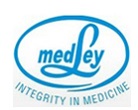Pharmaceutical excipients and recommended quantity
A drug is rarely administered into body in its original form. A convenient dosage form to be administered through suitable route is prepared. Compressed tablets contain active pharmaceutical ingredients along with various inert substances called excipients or additives. These are added to provide good quality formulation.
Commonly used excipients or additives are
- Diluents
- Binders/Binding agents
- Vehicles
- Granulating agents
- Lubricants/Glidants/Anti-frictional agents
- Disintegrating agents
- Sweetening agents
- Colouring agents
- Surfactants
- Buffers
- Complexing agents
- Suspending agents
Need for excipients/additives
Excipients are added:
- To ensure acceptability
- To ensure physicochemical stability during shelf life
- Optimum bioavailability
- Dosage and composition uniformity.
Vehicles: Vehicle/solvent or solvent system is major part of oral liquid and parenterals.
Categories of vehicles are
- Aqueous vehicles (water, syrup)
- Non-aqueous water miscible vehicles (propylene glycol, sorbitol, glycerol)
- Non-aqueous water immiscible vehicles (vegetable oils)
Drug is more soluble in water miscible vehicles like propylene glycol (co-solvent) and gives better bioavailability. Solubilisers for example polysorbate 80 is used to increase solubility of drug in aqueous vehicles. Viscosity of the vehicles is another factor in absorption of drugs.
Diluents: Diluents are used to increase the bulk of powder when it is not practicable or difficult to compress such small amount in the form of tablet. It may be organic or inorganic
Organic diluent: carbohydrates are mainly used
- Starch
- Lactose
- Microcrystalline cellulose
These are hydrophilic powders which are useful in increasing the dissolution of poorly water soluble drugs like triamterene by formation of coat on drug surface (hydrophobic) and make them hydrophilic
Inorganic diluent: Dicalcium phosphate (DCP)
Others are calcium sulphate, calcium phosphate, mannitol, sodium chloride.
Binders: These are used for granulation, which help in compression into the tablet.
| Natural binders | Synthetic/Semisynthetic polymers | Sugars |
| Tragacanth | Sodium caboxymethyl cellulose | Liquid glucose |
| Acacia | Ethyl cellulose | lactose |
| Gelatin | Hydroxyl propyl methyl cellulose (HPMC) | |
| Starch | Polyvinyl pyrollidine (PVP) | |
| Alginic acid | Polyethylene glycol(PEG) | |
| Cellulose | Methyl cellulose | |
| Pregelatinized starch | Polyvinyl alcohols |
Binder characteristics
| Binder | Recommended concentration | Comments |
| Polyvinyl chloride (PVP) | 0.5-5% w/w | -Used in wet granulation, soluble in water and alcohol, can be used in dry form or with water, alcohol or hydro alcoholic solution.
-used for chewable tablets |
| Hydroxyl propyl methyl cellulose (HPMC) | 2-5%w/w | -used in dry and wet granulation |
| Starch | 5-25%w/w | Freshly prepared starch paste is used as binding agent |
| Pregelatinized starch (PGS)
Partially or fully PGS
|
5-10%w/w
5-75% |
-contains 5% free amylose, 15% free amylopectin and 80% unmodified starch
-used as binder, disintegrating agent, diluent.
Used in wet granulation, direct compression, enhance flow and compressibility. -consumes less time for paste preparation as compared to simple starch |
| Polyethylene glycol(PEG) 6000 | 10-15% | -It increases disintegration time when used above 5%
-anhydrous binder in which no water or alcohol is used |
Disintegrating agent: these are the substances which are added to the tablets to increase their disintegration in GIT.
| Disintegrating agent | Recommended concentration | Comments |
| Starch and pregelatinized starch (maize and Potato) | 5-10% | Great affinity for water and swell up when they come in contact with water and break the tablet. |
| Microcrystalline cellulose | 5-15% | -Very good disintegrator and binder
-At high compression forces, it may delay drug dissolution |
| veegum | Should be avoided with low dose drugs like digoxin, alkaloids | |
| Croscarmellose sodium | 1-6% | |
| Starch +sodium lauryl sulphate | Better wetting of granules |
Lubricants/Glidants: These are added to the granule before compression to improve the flow of granules from hopper to the dye cavity and thus reducing inter-particle friction.
| Lubricants/ glidants | Recommended concentration |
| Magnesium sterate | 0.25-2% |
| talc | 1-5% |
| Stearic acid | 0.5-3% |
| Hydrogenated vegetable oils | 2-5% |
| Sodium lauryl sulfate | 1-3% |
| Mineral oil | 1-3% |
Others:
Surfactants: polysorbate80 with phenacetin, promotion of wetting through increase in effective surface area and dissolution of drugs.
Suspending agents: hydrophilic polymers like vegetable gums like acacia, tragacanth. Semisynthetic gums like CMC, MC
Buffers: useful in creating right condition for drug dissolution for example, buffered aspirin tablets.
Complexing agent: these are used to increase drug bioavailability by
- Enhanced membrane permeability for example, enhanced GI absorption of heparin with EDTA
- Enhanced dissolution by formation of soluble complex
- Enhanced lipophilicity- caffeine-PABA complex
Precipitation/crystal growth inhibitors: PVP, HPMC, PEG, PVA (polyvinyl chloride)











